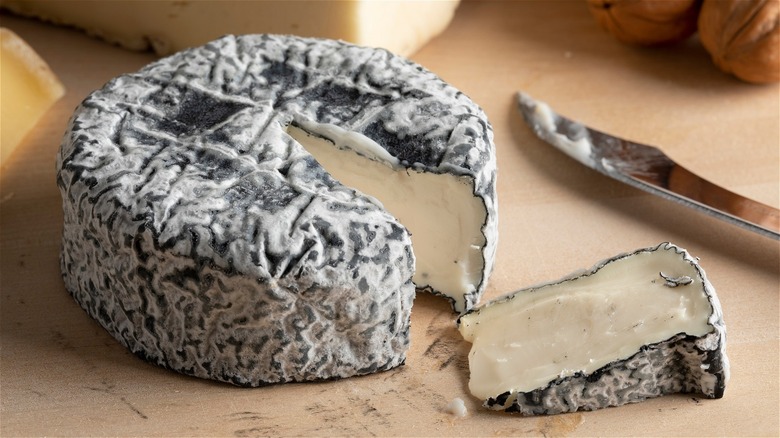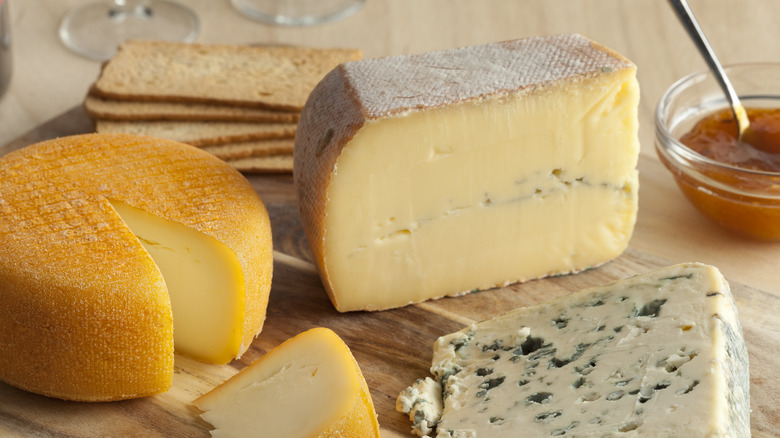The Traditional Reason Some Cheeses Are Covered In Ash
Trust us on this one: When it comes to cheese, ash is your friend. If you're at your local cheese shop and see a bright white or cream-colored cheese with a dark line running through the middle or coating the outside, it's actually a food-safe charcoal — and it makes your cheese taste better. (This is different from blue cheese: That's actually a safe mold.)
Ash-ripened cheeses are a tradition from France, home of 1,200 cheeses, which actually started out of necessity. Take a classic ash-lined cheese like Morbier, for example. In the 1800s, dairy farmers in eastern France would milk their cows in the morning and evening; most of the milk was used to make a classic cheese called Comte that's similar to Gruyere, but there'd be some curd left over at the end of the day.
They'd fill wheel-shaped molds halfway, but there was no way to refrigerate the curd till the next milking. Organic ash acted as a natural bug repellent, so sprinkling a dusting over the top of the half-made cheese would keep it safe until morning.
Today, cheese is often made indoors in sterile, food-safe conditions, so ash is no longer strictly necessary for its anti-pest properties. But it turns out that, even alongside modern technology, ash has an important scientific effect on a cheese's texture — so cheesemakers around the world still embrace the completely safe ingredient.
Why ash on the outside of cheese makes the inside more rich
Cheese, just like us, matures over time. As a wheel of cheese ripens, two processes take place at once. First, on the inside of the wheel, natural cultures break down proteins, fats, and sugars into their component parts, which produces a creamy, silken texture. Second, other cultures on the outside create a rind that adds flavor, protects the goodness inside, and can often be eaten alongside the cheese inside.
Many of the compounds created inside a ripening wheel of cheese are acidic: amino acids from proteins, fatty acids from fats, acetic acids from sugars like glucose. A major task in the cheese-aging process, called affinage, involves carefully monitoring acid levels — part of why it's hard to do at home! If a cheese's pH is too high or low and the wheel's rind does not form correctly, the cheese won't taste right.
Ash, it turns out, is an alkaline agent — so when it's applied to the outside of a cheese, it can help raise the surface pH. This helps the cheese's natural rind to bloom more successfully, which better protects the delicate ripening process inside the wheel.
By developing a stronger rind, the affineur, or cheese ager, can allow the interior ripening process to continue for a bit longer — and the texture to become even more buttery and sublime. So next time you see a striking black-and-white cheese with ash, take our advice: Dig in!

